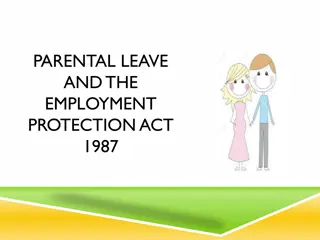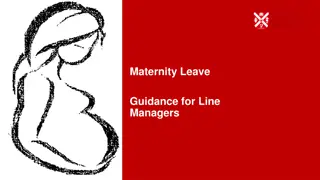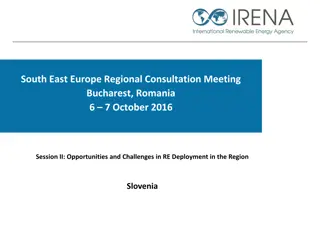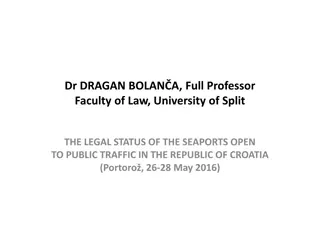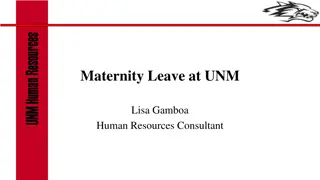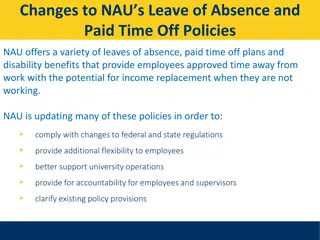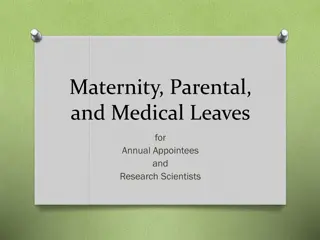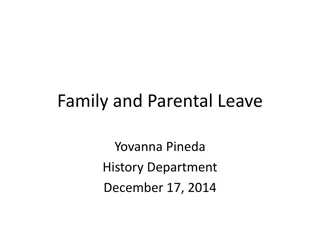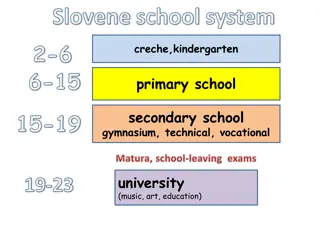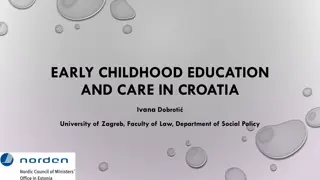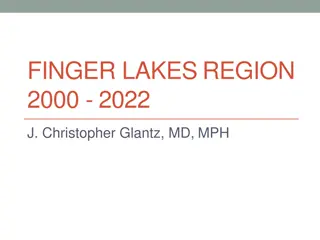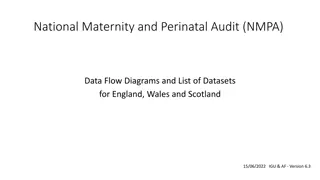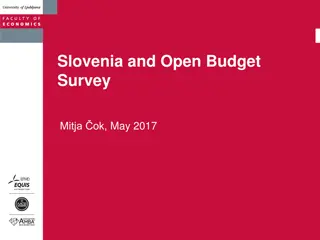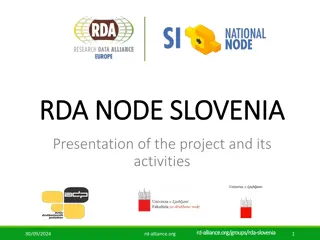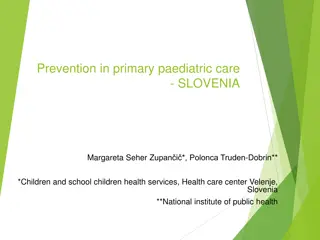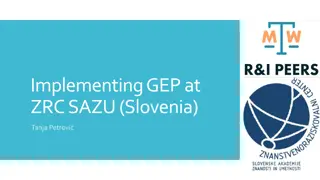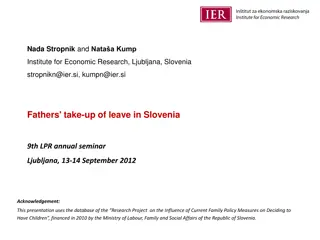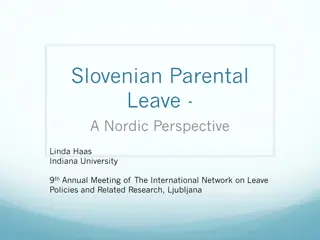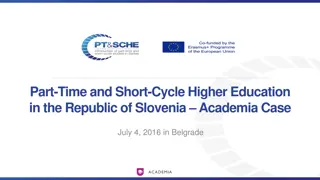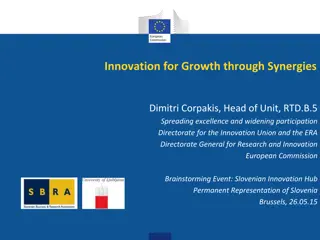Contrasting Maternity Leave Policies in Slovenia and Croatia
A comparative analysis of the maternity leave policies in Slovenia and Croatia, focusing on historical backgrounds, recent reforms, influencing factors, and implications. The differences and similarities in generosity, gendersensitiveness, and social investment perspectives are examined, shedding light on the socio-economic, political, and cultural factors shaping these policies.
Uploaded on Oct 11, 2024 | 0 Views
Download Presentation

Please find below an Image/Link to download the presentation.
The content on the website is provided AS IS for your information and personal use only. It may not be sold, licensed, or shared on other websites without obtaining consent from the author. Download presentation by click this link. If you encounter any issues during the download, it is possible that the publisher has removed the file from their server.
E N D
Presentation Transcript
Ivana Dobroti University of Zagreb, Faculty of Law Social Policy Chair 9th LP&R network seminar, Ljubljana, September 13th 2012
Outline short view in history recent reforms differences & similarities influencing factors? some implications? future challenges? 9th LP&R network seminar, Ljubljana, September 13th 2012
Short view in history... early socialism similar development decentralization/ self-management first differences leave scheme - up to the late 1980s 1 year leave (100%) Slovenia 105 days of ML & 260 days of PL, with some universal elements & extended leave for families with more children Croatia 180 days of obliged ML & 180 days of additional ML fathers entitled to leave since the 1970s, however with some conditionality & mothers` gate-keeping function ECEC - poorer network in Croatia (SI 50,9% in 1991 // HR 30,3% kindergartens & 7,8% nurseries in 1989) 9th LP&R network seminar, Ljubljana, September 13th 2012
Recent reforms differences & similarities Slovenia vs. Croatia generosity gendersensitiveness universalism, equality, transparency social investment perspective flexibility [less in leave design]; focus on organisations demographic dimension ECEC dominantly public; integrated in education system 9th LP&R network seminar, Ljubljana, September 13th 2012
Why different? socio-economic level pronounced socio-economic problems during the transition in Croatia, additionally stipulated by war - retrenchment [WB] political level right-wing vs. left-wing dominance closed vs. open policy making process weak vs. strong social partners international organisations [WB, IMF] // EU cultural level population to some extent less liberal values in Croatia pronatalist discourse vs. focus on equal opportunities, social investment perspective, active fatherhood 9th LP&R network seminar, Ljubljana, September 13th 2012
Some implications... higher support to so called dual earner/dual carer model in Slovenia [e.g. redistribution of care, childcare gaps...] less pronounced gender inequalities [e.g. lower employment related penalty of motherhood; lower gender pay gap...] lower poverty rates [children / families with children / elderly women] 9th LP&R network seminar, Ljubljana, September 13th 2012
Future challenges? policy design still distribution, discrimination issues...] incomplete/unfinished gender revolution ? [carework quality of [family] life? [high work intensity & work-family conflict] different lifestyles & lifecycles; values & preferences? new socio-economic, political & institutional circumstances globalisation, closer economic integration (including EMU criteria) & recent economic crisis? how to maintain existing rights? // how temporarycharacter of recent retrenchment measures? // growing instrumentalisation? new modes of governance & new power relations [SP, GEU] 9th LP&R network seminar, Ljubljana, September 13th 2012



